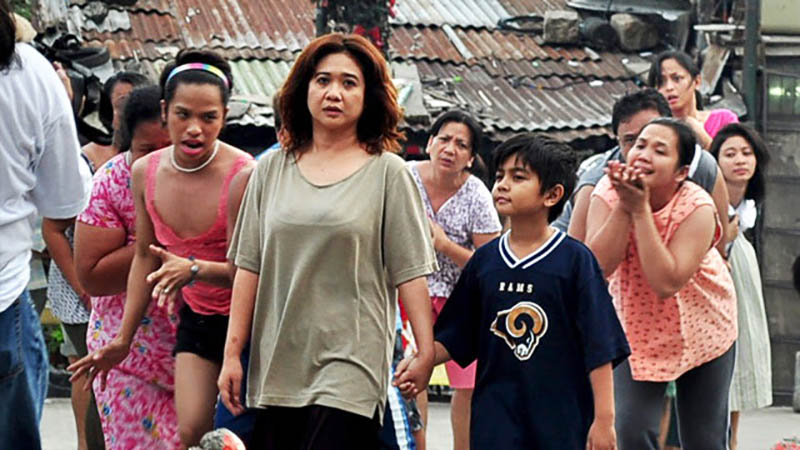Binging During Quarantine: Ang Babae sa Septic Tank

For this edition of Binging During Quarantine, we have chosen Marlon Rivera’s 2011 satirical comedy film Ang Babae sa Septic Tank. Upon its release, the film broke box office records at the Cinemalaya Independent Film Festival and became the highest-grossing independent film in Philippine Cinema until 2015’s That Thing Called Tadhana. Ang Babae sa Septic Tank was nominated and won various awards including “Best Picture,” “Best Director,” “Best Screenplay” and “Best Performance of an Actress” at the 7th Cinemalaya Film Festival as well as “Best Director,” “Best Film,” “Best Screenplay,” and “Best Actress” at the 10th Gawad TANGLAW awards. Since it’s release, it spawned a sequel feature film Ang Babae sa Septic Tank 2: ForeverIsNotEnough as well as a third installment in TV series form Ang Babae sa Septic Tank 3.
Ang Babae sa Septic Tank (2011)
Directed by Marlon Rivera
Available on iWant
Marlon Rivera’s Ang Babae sa Septic Tank was one of my first introductions to Philippine cinema. I watched it in the summer of 2017, then a college student in New York, as part of a week-long contemporary Philippine cinema series at the Museum of Modern Art’s film department. It was the sole comedy in a lineup of 18 films, and I had found the title particularly striking and interesting. I watched it then and enjoyed the film a great deal. And it was a treat, once again, to revisit it three years later with a more critical eye, and looking to see whether I would still find those same pleasures.
Ang Babae sa Septic Tank is about a particular kind of filmmaking that is prevalent in our local cinema: specifically, a form of filmmaking that tells narratives about the impoverished and oppressed of society, but does it gratuitously to the point of exploiting the very people it claims to (re)present. Rivera’s film chooses to critique this brand of filmmaking through satire, by telling the story of two young well-to-do filmmakers Bingbong (JM De Guzman) and Rainier (Kean Cipriano)who, completely lacking a sense of self-awareness and driven by their desire for international acclaim, choose this to make a story about the suffering of an impoverished woman who is so beaten up by life and hardship that she makes the tough decision of selling one of her seven children.
The movie opens with a narrator describing the outlines of a social-realist style film over images of poverty and Eugene Domingo playing Mila. These are scenes 35-40, which the film will revisit in its various iterations, as the young filmmakers brainstorm and try to find ways in which to “improve” their film, such that it reaches the likes of Cannes, Venice, and the Oscars. These festivals and award ceremonies return various times in the film to make a point: these young filmmakers are not after reaching the audience whom their film is about. Rather, these young filmmakers are using the impoverished of Philippine society to present them to the Western gaze, for whom the sight of the extreme poverty of the Philippines becomes a curious and heart-wrenching phenomenon. Such a sight, in turn, can lead our protagonists to the acclaim and international filmmaking awards that they yearn after.
In their desire for acclaim, the young filmmakers exploit the very people they take advantage of the group whom they romanticize and make their films about. Hoping for critical praise they scheme for the most attention-grabbing and provoking scenes which leads to the second part of the problem: they are no longer making quality films, but rather settling for gimmicky plots meant to raise an eyebrow. Rather than make an honest reflection of life, they throw every possible tragedy upon their subject. Poverty, violence, rape, the selling of one’s child—and of course, as the main attention grabber—the woman falling into a septic tank. Unnecessarily graphic images are the primary characteristic of this genre—and it’s fatal flaw, Rivera’s film shows.
For me, the most interesting part of Ang Babae sa Septic Tank is in how Rivera injects such a critique in a brief hour and a half of comedy. The narrative seamlessly switches between the images of the fictional “Walang Wala” and the main story of Rainier and Bingbong. A great deal of this is also possible through the performance of Eugene Domingo, whose acting skills are in full display with a fun self-caricature and her performance of the various iterations of Mila’s storyline. In sum, these, combined with wit and irony that runs through the whole of the film, makes Ang Babae sa Septic Tank, a thoroughly enjoyable—and thoughtful—film to watch.




